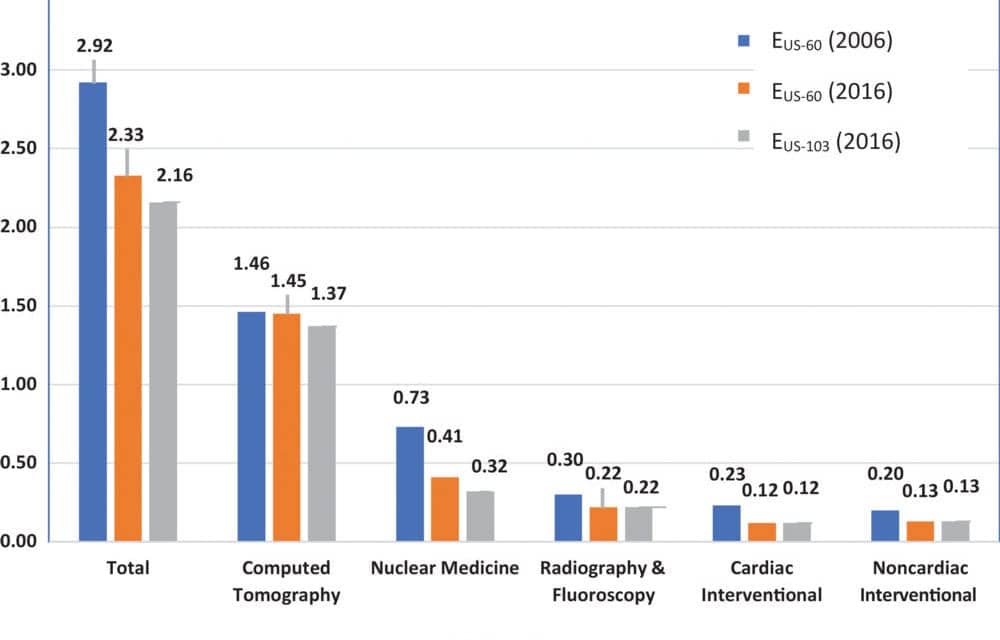Patient exposure to medical radiation fell by 20% between 2006 and 2016, according to a study from the journal Radiology, reported by the Radiological Society of North America (RSNA).
A landmark report published in 2008 found that per capita radiation exposure in the U.S. increased six-fold between 1980 and 2006.
“The radiation dose to the U.S. population went up dramatically because of medical exposure, mostly from CT scanning and nuclear medicine, and that woke everybody up to the problem,” said study senior author Fred A. Mettler Jr, MD, radiologist from the Department of Radiology at the University of New Mexico in Albuquerque.
In the wake of the report, medical societies and organizations enacted initiatives to increase awareness of exposure while equipment manufacturers developed more refined dose modulation technology.
Read more from RSNA and find the study in Radiology.
Featured image: Bar graph shows estimated average annual individual effective dose in the United States from diagnostic and interventional patient radiation exposures (in millisieverts). Comparison between 2006 and 2016 has been computed by using weighting factors from International Commission on Radiological Protection (ICRP) Publications 60 and 103. EUS-60 = effective dose to a person in the United States using tissue-weighting factors from ICRP Publication 60 (8), EUS-103 = effective dose to a person in the United States using tissue-weighting factors from ICRP Publication 103 (9). Adapted with permission of the National Council on Radiation Protection and Measurements.






